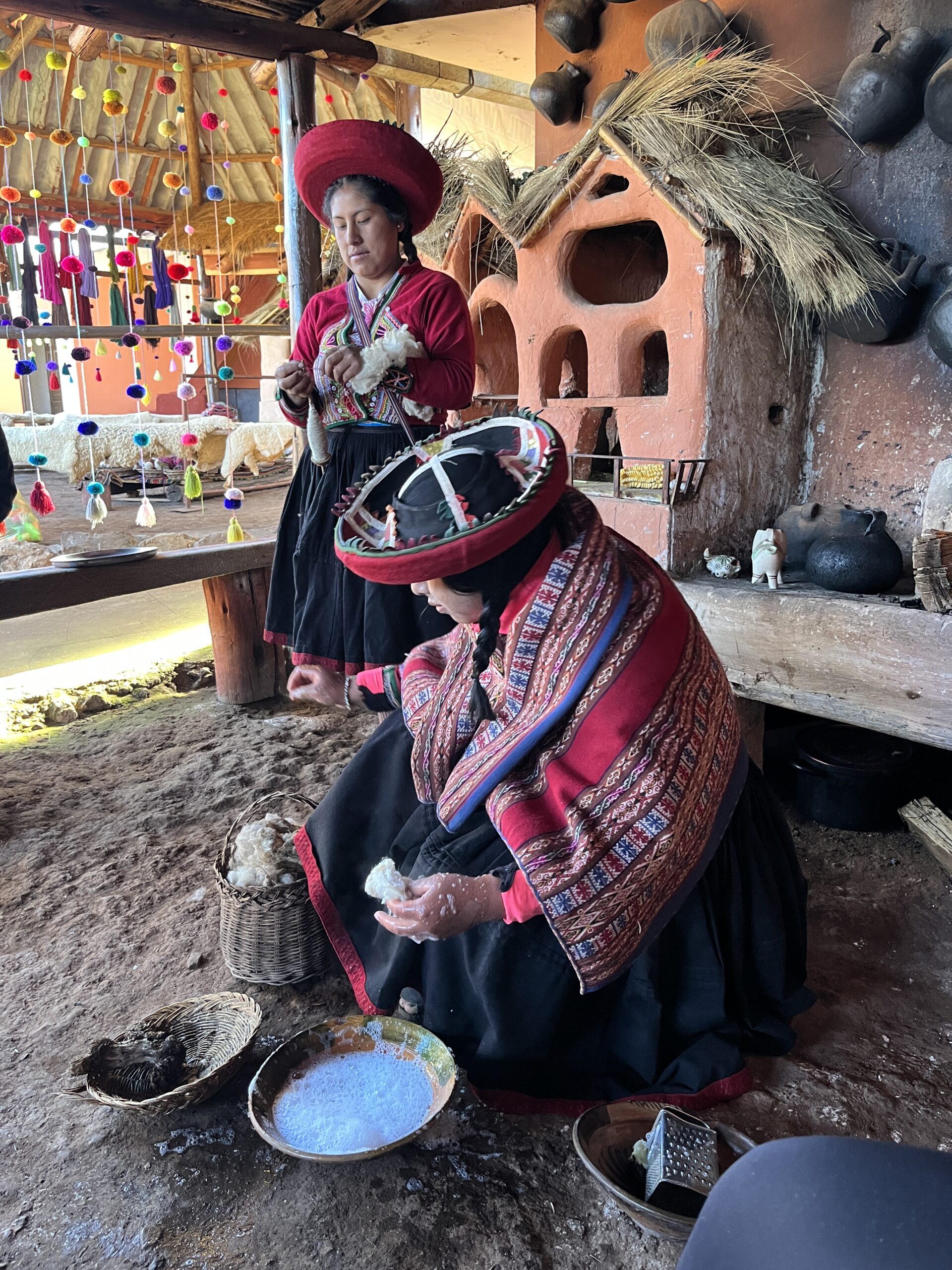1. Day tour or half-day tour of the Sacred Valley

When you arrive in Cusco, you’ll need two to four days to acclimate to the altitude. During that time, you can take a full day or half-day tour of the Sacred Valley, one of the most gorgeous spots in the area. If you have a good amount of time in Cusco, I recommend splitting these tours in two so you have more time to take in the sites.
Each tour company is different, but a typical schedule goes like this:
- Hotel pickup around 6-7 am
- Chinchero Ruins
- Chinchero Handicraft Market and Demonstration
- Moray: Incan Laboratory
- Salt Mine demonstration
- Maras Salt Mines
- Lunch in Urubamba
- Ollantaytambo Inca ruins
- Pisaq Incan ruins
- Silver shop demonstration
- Plaza de Armas drop-off

2. Hike to Huchuy Qosqo
This hike near Cusco is less popular than other ruins but just as historically significant and impressive. You have several options to do this day trek. I recommend going with an Indigenous guide who can explain about the history and nature surrounding the area. You have the option to hike from Cusco or from Lamay (be warned if you start at the bottom of Lamay, the path is incredibly steep.) You can also do what I did and take a tour to a small town above the ruins, hike to about 4,410 meters (14,469 ft.) then hike down to Huchuy Qosqo, and then on down to Lamay. I went with this tour group. Percy, the guide, was extremely knowledgeable about the region, and we had the entire site to ourselves.

3. Waqrapukara
This was one of my favorite, uncrowded day trips from Cusco. The short 2 km hike to this fortress was stunning, and besides one small group and some local guides, no one else was there. The Waqrapukara fortress was built by the Canchis culture, which coexisted with the Incas and was established south of Cusco. Both groups battled for control of the region. They also joined forces to fight their common enemies, the Chanchas. The Canchis ended up allying with the Inca in the period of Incan expansion. The Inca built temples and enclosures in the area. Rather than destroy the Canchis architecture, they built around it, as well as worked with nature to incorporate formations of the land. The name Waqrapukara comes from a Quechua word that means “horn-shaped fortress” as the construction is between two rock formations in the shape of horns.

4. Vinicunca also known as Montaña de Siete Colores or Rainbow Mountain
Whenever anyone asked me where I most wanted to visit in Peru, I’d close my eyes, and this spot would appear. Rainbow Mountain gets its coloration from a high concentration of copper and iron, and at 5,036 meters (16,522 ft.) it’s the highest place I’ve ever hiked. If you do this tour, I absolutely recommend to book it for the late morning and afternoon. Otherwise you will fight hordes of crowds who get there early. With an afternoon tour, you’ll leave Cusco around 8 a.m. and be back in the city by 6:30-7 p.m. If you have time and are physically fit, I also recommend adding the Red Valley to your hike. Make sure you are well acclimated before attempting this hike, several people I met needed oxygen because they tried this hike the first few days they reached Cusco. You can bring some coca leaves to chew on to help with the altitude.

5. Seven Lagunas de Ausangate
One of my favorite routes in Peru: the seven lagunas of Ausangate. You get to hike around seven glacial lakes in the foothills of Ausangate, Peru’s fifth highest mountain. The highest point around the route is 4,800 meters or 15,748 ft. The hike takes around three to five hours to complete, and most tour groups include breakfast and lunch. After the hike, you also have the option to soak in hot springs that are in the small town of Pacchanta, where the hike begins. I went with this tour agency: Machupicchu Encanta, but many different groups offer this tour.

6. Cochahuasi Animal Sanctuary and Pisaq
I loved being able to take a public bus from Cusco to visit the Cochahuasi Animal Sanctuary. You catch a bus from the city (it costs about 5-6 soles) and ask to get off at the animal sanctuary. The sanctuary rescues endangered and threatened animals who have been captured and kept as pets or who can no longer survive in the wild. They help them with recovery, and if it’s possible, facilitate their safe release. While there, I had an Andean Condor (the second largest bird in the world) fly right over my head. We were also able to see pumas, Andean mountain cats, monkeys, pygmies, parrots, vicuñas, llamas, alpacas, and coatis. You can also try the most expensive coffee in the world, which is made from coati poop, for about $6. If you have time, you can hop back on the bus toward Pisaq and visit its legendary artisan market and ruins. After you’re finished, grab another colectivo back to Cusco.


Leave a Reply